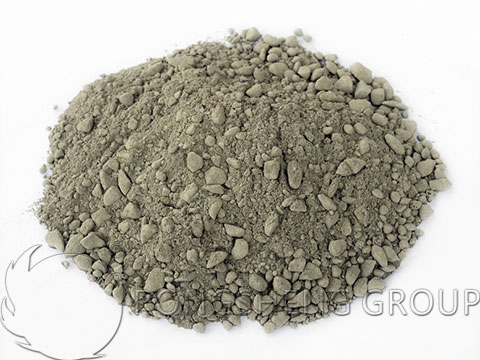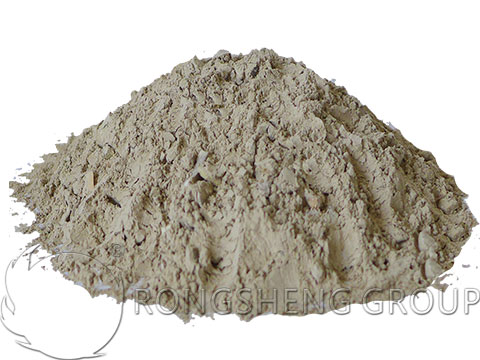Refractory castables are divided into acidic, alkaline, and neutral castables according to their resistance to chemical attack. According to the volume density, it is divided into dense castable refractory and light castable. According to the materials used, it is divided into aluminum silicate, magnesium, magnesium chromium, corundum castables, etc. There are many types of refractory castables, and it is difficult to make a choice without clear indicators and operating temperatures. RS refractory material manufacturer responded to “How to correctly choose refractory castables” and gave some more reliable methods for reference.
(1) Refractory castables must meet the requirements of the kiln’s usage environment.
Dense refractory castables have different requirements depending on where they are used. When selecting, it should be selected according to the characteristics of the castable. For parts that come into contact with high-temperature flames, high-temperature-resistant castables should be selected. Castables with high-temperature resistance and strong penetration resistance should be selected for parts that come into contact with high-temperature solutions. The parts that come into contact with slag should use castables that are highly resistant to the chemical erosion of slag. High-strength and wear-resistant castables are used for parts that come into contact with the impact and friction of various materials. For parts with frequent temperature changes, castables with excellent thermal shock resistance should be used. As long as it meets the requirements of the main production conditions, it is a suitable refractory castable.

The main uses of lightweight refractory castables are heat insulation, reducing load-bearing structures, lowering furnace shell temperature, and reducing heat loss, thereby achieving energy-saving effects.
(2) Economy of investment cost of refractory castables.
After determining which refractory castable to choose, it is also necessary to economically reduce costs. For example, if the use temperature is 1500°C, castables with a use temperature greater than 1600°C will not be selected if the castables can meet the working conditions. If high alumina bauxite clinker is used as the main material in the wear-resistant parts to meet the wear resistance requirements, castables with corundum as the main material should not be selected. The main reason is that the price of refractory castables varies greatly depending on the content of the main materials used. There is no need to ignore economic costs in pursuit of high quality. This requirement is especially important for parts that are subject to daily wear and tear.
(3) Particle size selection of refractory castables.
The construction parts of refractory castables may be thick or thin, and the particle size ratios used are different. For example, when pouring a lining with a thickness greater than 100mm, more large-grained critical aggregates need to be added to improve structural strength and wear resistance. The parts with a thickness of 10mm when poured or painted have fewer large particles of aggregate. Avoid adding large aggregates to make them protrude from the lining, which not only affects the appearance but also causes large particles to wear easily in terms of use. This causes holes in the lining, which in turn affects the service life. Depending on the pouring thickness, the pouring method or the smearing method can be used. Therefore, the selection of particle size of refractory castables is also very important.
(4) The shelf life of refractory castables.
The storage time of refractory castables in dry areas is about 6-9 months. Before use, check whether there are any agglomerations. During transportation or handling, the castable will agglomerate due to extrusion. If it can be easily patted away, the use effect will not be affected. However, the shelf life of the castables is a secondary consideration, because the configuration processes of the castables are different and most parts are not in stock. All need to be produced according to user needs and the production process adjusted.
It can be seen from the above that the selection of refractory castables is variable and must be used flexibly. To quickly select castables, it is necessary to mention the specific use location, working conditions, use temperature, pouring thickness, and construction method of the castables. The main thing is to find the right method to choose high-quality refractory castables while reducing costs.

Performance Characteristics of Dense Refractory Castables
Dense refractory castable is a construction material used in high-temperature operations. Its main function is to fill and support the furnace while providing oxidation resistance at high temperatures. Dense castables refractory are further divided into aluminate cement castables, chemically bonded refractory castables, clay bonded refractory castables, low cement series refractory castables, self-flowing castables, and new technology refractory castables. The body density is generally around 1800Kg/m³-3500Kg/m³.
Dense refractory castables are generally used for furnace lining, working layer, and permanent layer. According to the use environment, use location, and use requirements, different refractory castables are used to extend the service life of the castables.
High-temperature antioxidant properties. Medium and Dense castables refractory can withstand high temperatures and high oxidation temperatures, and their oxidation resistance is better than other types of castables. Can be used in high-temperature furnaces for a long time.
Reusability. Medium and Dense refractory castables can be reused, reducing environmental pollution and waste of resources.
Density and weight. Medium-Dense castables refractory have a lower density and weight than other types of castables, making them easier to move and fill within the furnace.
chemical composition. The chemical composition of medium and Dense refractory castables can be adjusted according to different requirements to meet different high-temperature environments and application needs.
Stability and reliability. Medium and Dense castables refractory can withstand high temperatures and high oxidation temperatures and maintain stability and reliability over long periods of use.
manufacturing cost. Medium-Dense refractory castables are more expensive to manufacture than other types of castables, but their performance value and cost of use make them a popular high-temperature building material.
RS Kiln Refractory Factory
RS Kiln Refractory Factory can provide high-quality refractory lining materials for high-temperature industrial furnace linings, including various refractory bricks, refractory castables, refractory plastics, etc. If you need to buy Dense castables refractory, Dense refractory bricks for the working lining of high-temperature industrial furnaces. Please contact us. We can provide you with high-quality refractory materials at competitive prices.